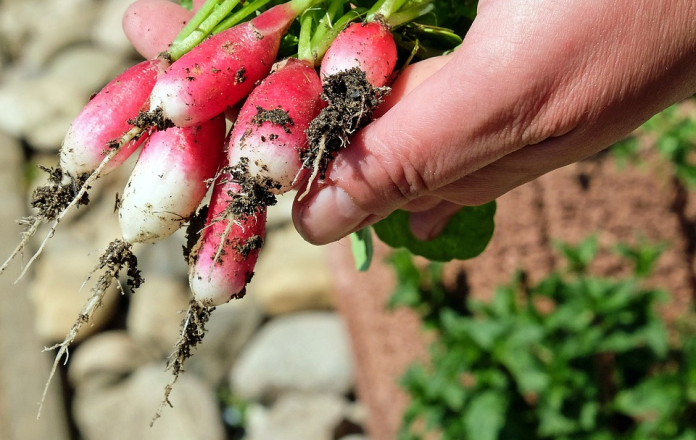Admit it, we want things to happen fast. We’re a society of fast food, fast internet, and instant gratification. But when it comes to growing nutritious food, we have to be patient. Mother Nature usually needs time to work.
But there are exceptions in the vegetable world where gratification, if not instant, isn’t far off. We only need a few weeks to produce some nutritious vegetables and enjoy them for a great lunch or dinner. Imagine having fresh spinach harvested four to six weeks after planting. Even better, a vegetable garden in your backyard will complement that verdant, green lawn and add some color and texture to your landscape.
There are many wholesome veggies you can grow, relatively quickly, a few steps away from your kitchen. Here are five vegetables to get you started.
Spinach

Spinach is an excellent source of minerals, vitamins, potassium, zinc, magnesium, iron, and calcium. And you can harvest it as soon as a month after planting. Sow the seeds into good quality soil and then water.
This is a must-have vegetable if you’re living off the grid. Spinach improves eyesight and cognitive function, combats Alzheimer’s disease and gastric ulcers, and increases blood flow to the brain. Its high content of potassium and its lack of sodium helps maintain good blood pressure and its antioxidants strengthen muscles. It also reduces the chance of heart attacks and strokes.
Carrots
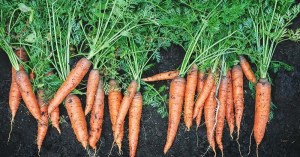
Carrots are excellent as part of a salad, as a snack, and taste great when cooked. They thrive in the USDA’s Hardiness zones 4, 5, 6, 7, 8, 9, and 10. They do need lots of sun, and do well when planted about three to five weeks before the last frost. Select a thin fingerling variety and plant the seeds about 2 inches apart at a depth of ¼ to ½ inch. Water at least 1 inch per week and fertilize four weeks after planting if the soil is lacking organic matter. Don’t use compost. In about six weeks, you’ll have your harvest — and some can be picked even sooner as part of the thinning process.
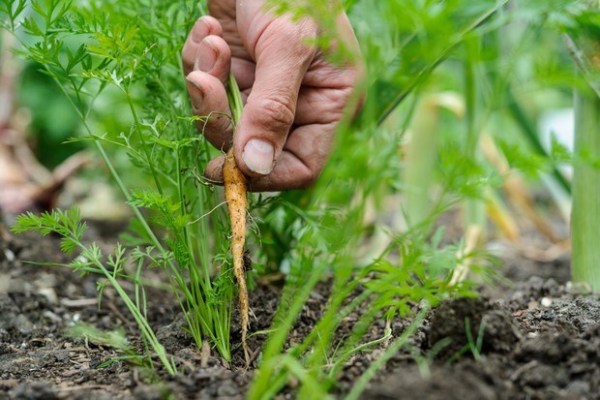
Carrots offer carbs and fiber, lowers cholesterol and reduces the risk of cancer. It includes vitamin A, which promotes good vision and improves immune functions. Its Biotin enhances metabolism and vitamin K1 promotes bone health and blood clotting. It has potassium that improves blood pressure and vitamin B6 to convert food into energy.

Radishes
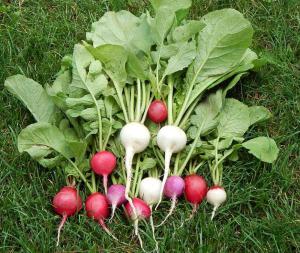
Another ideal food for salads, radishes are ready for your table in as little as 21 days after planting. This is a cool weather crop, planted in spring and autumn and two weeks before the last frost. It thrives in sunlight and well-drained soil with a pH level of 6 to 7, according to the Farmer’s Almanac. The soil should be free of rocks. Include organic matter like compost, manure, or leaf mold in the soil before planting.
Rich in fiber, radishes also aid the digestive system and help combat several forms of cancer. They improve cardiovascular health, relieve respiratory disorders, lower blood pressure, help manage diabetes, and protect the kidneys.
Lettuce
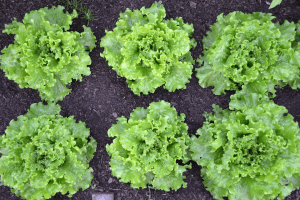
Lettuce grows in colder temperatures and is ready to begin harvesting 30 days after planting. Plant in the early spring when temperatures are between 45°F and 65°F. It thrives in moist, cool conditions and can tolerate a light frost. It will flower or bolt to seed if the weather gets too hot.

The soil should be loose, moist, well-drained, and fertilized. It favors acidic conditions. So include some compost into the soil. Plant seeds in rows of 12 to 15-inches long. Leave a space of 18-inches between rows. Thin the growing seedlings to 4-inches apart to prevent overcrowding. You can harvest over time, by cutting outer leaves as they mature, or take the full plant when leaves are full size, but still tender. If you wait until the lettuce is too mature, it ends up tasting bitter.
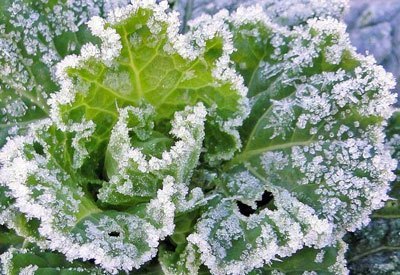
There are several types of lettuce. They include Romaine, which is sweet and crunchy. Crisphead or Iceberg, which has a crisp texture and mild taste. Butterhead (also known as Boston or Bibb) has large, soft, green leaves that are sweet tasting. Romaine has the greatest benefits.
Lettuce, in general, has only 12 calories for one shredded cup. It prevents the build-up of plaque. It includes relaxing and sleep-inducing properties. Its minerals improve energy. It’s an ideal food for anyone monitoring their blood sugar or wishes to maintain their weight.
Arugula
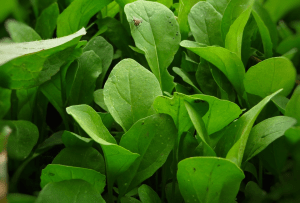
The green leaves of the arugula plant have a peppery taste and are ideal for salads. Once mature, cut the leaves off the plant and enjoy. Leaves will continue to grow back each year.
The plant thrives in well-drained, moist soil with a pH level of 6 to 6.5. Add compost to the soil before sowing. Do the composting in the fall. and plant the arugula in the spring. The plant tolerates cool weather and an occasional frost, so plant as early as April in daytime temperatures above 40 degrees. Select a sunny location for planting, although it tolerates some shade. The plant grows 1 to 2 feet tall and is ready for harvest about four weeks after planting.
You can either plant the seeds in rows or scatter them over an area. The seeds should be about one-quarter inch deep and 1-inch apart. Once the leaves develop, you can harvest.
Arugula includes vitamin K, which assures healthy bones and a better immune system. It also has cancer-fighting properties, increases metabolism, improves eyesight, and enhances mineral absorption.
Growing your own nutritious foods provides many benefits. You’ll save time and money with fewer visits to the grocery store. You’ll also be prepared if the store shelves are empty!
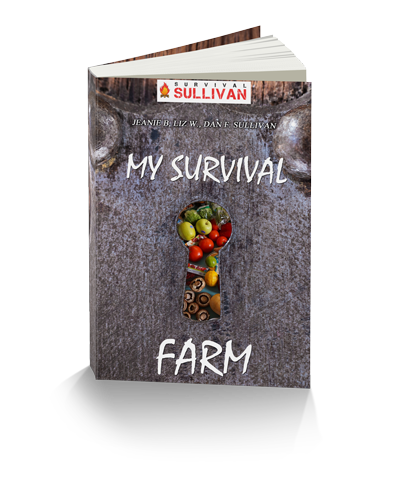
Editor’s Note: A guest submission to The Prepper Journal from Raymond Poole. Raymond Poole is an organic cooking and gardening fanatic. He spends his free time trialing and testing different growing techniques to make his beloved fruit and vegetable garden flourish to full flavor.
source : theprepperjournal

